The Plastic Paradox
n November 2024, more than 3,000 delegates from around the world converged on Busan, South Korea. The meeting was meant to mark the conclusion of a two-year global process that had a single, ambitious goal — to resolve one of the most urgent environmental crises of our time: plastic pollution.
“For years, the UN had been working on adopting resolutions and encouraging governments, the private sector and environmental groups to address the issue of plastic waste leaking into the oceans,” says Stewart Harris ’95, who majored in biology at Bucknell and is now managing director of global affairs for the American Chemistry Council. “That issue evolved into the creation of this Intergovernmental Negotiating Committee to develop a treaty.”
Established by the United Nations Environment Programme — the world’s highest decision-making body on the environment — the Intergovernmental Negotiating Committee (INC) on Plastic Pollution had been tasked with forging a legally binding, international treaty to curb plastic waste. “Back in 2022, when they adopted the resolution, it was a very emotional time. There was a lot of enthusiasm and excitement about the road ahead,” says Harris, whose role as an observer and leader of the global chemical and plastic industry delegation requires him to provide professional expertise to the negotiators.
That road ran from Punta del Este, Uruguay, where the committee held its first session, through France, Kenya and Canada before arriving at its terminus in the Busan Exhibition and Convention Center, where roughly 3,300 delegates — including representatives from 170 nations and observers from more than 400 organizations — gathered to hash out the details.
However, what became clear over the course of the fifth session was that it would not, in fact, be the last. “When we got to Busan, I think there was a recognition that governments just hadn’t given themselves enough time to work through the complexity of these issues,” says Harris.
In less than a century, plastic has become quite literally embedded in every facet of life on earth. It inhabits both lung and brain tissue, can be found on Mount Everest and in the Mariana Trench, and is used to create everything from lifesaving medical and surgical devices to clothing, kitchenware and electronic components. The complexities of figuring out how to regulate such a material are many, to say the least.
What the INC negotiations prove is there is an overwhelming consensus that plastic pollution is a global problem. The lack of a treaty, however, demonstrates that there is decidedly less unity around a global solution, though this does not mean there isn’t one. As deliberations continue into 2025, Bucknellians of all stripes — scientists and researchers, economists and industry leaders — are working toward a future in which plastics are as sustainable as they are necessary.
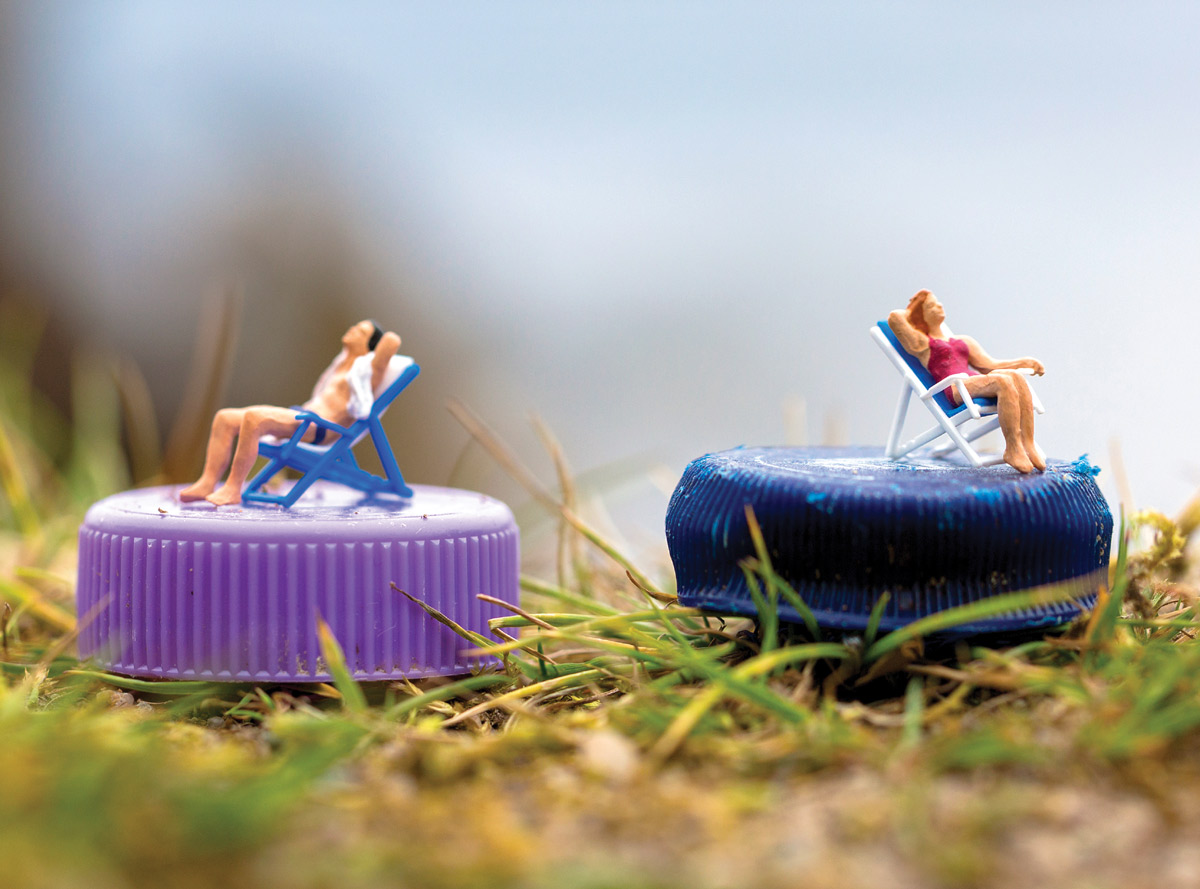
The Plastics Life Cycle
One widely accepted method for understanding the environmental impacts of this cycle is to perform what’s called a cradle-to-grave life cycle assessment (LCA).
“You’re looking at the life cycle from its infancy when raw materials are extracted from the earth, all the way to where a product ends up in the end-of-life scenario,” says Rochelle Fisher Bradford ’94, a Bucknell chemistry graduate who led the sustainable materials team for global packaging at Coca-Cola. (Coca-Cola was somewhat of a trail-blazer in this space and is often credited with having performed the first LCA in the country in 1969 when it examined emissions outputs and waste flows of beverage containers.)
For most consumers, the lifespan of a plastic product begins and ends with its usability. This is particularly true of single-use plastics. A high-density polyethylene grocery bag exists for the half hour it takes to get food from the checkout counter to the kitchen pantry. A polyethylene terephthalate (PET) water bottle lives and dies between the first sip and the last. A polypropylene wet wipe survives the few seconds it takes to wipe down your hands. Then, poof: into the garbage or the recycling bin.
However, there is a vast distance between the lifespan of the product and that of the polymer. Polyethylene and polyurethane can take hundreds of years to decompose, if not longer. Current estimates suggest the world produces between 350 and 450 million tons of new plastic waste each year, approximately half of which is composed of single-use plastics, so there is a significant push to focus pollution mitigation efforts on the tail end of the life cycle.
“What the industry is trying to do as a whole is find a better alternative than throwing it all in a landfill,” says Bradford, who in her role at Coca-Cola helped shepherd an initiative to make all consumer-facing plastic recyclable in the coming years. “Using a method called mechanical recycling, you can basically take a PET bottle that’s been used, chop it up into a bunch of pieces, clean and sterilize it and melt it down and form another bottle.”
An emphasis on recyclable materials is a step toward the cradle-to-cradle approach, in which products and materials can exist in a closed loop of infinite circulation rather than becoming waste.
In theory, every type of plastic is recyclable insofar as it has the ability to be recycled. In practice, however, challenges remain.
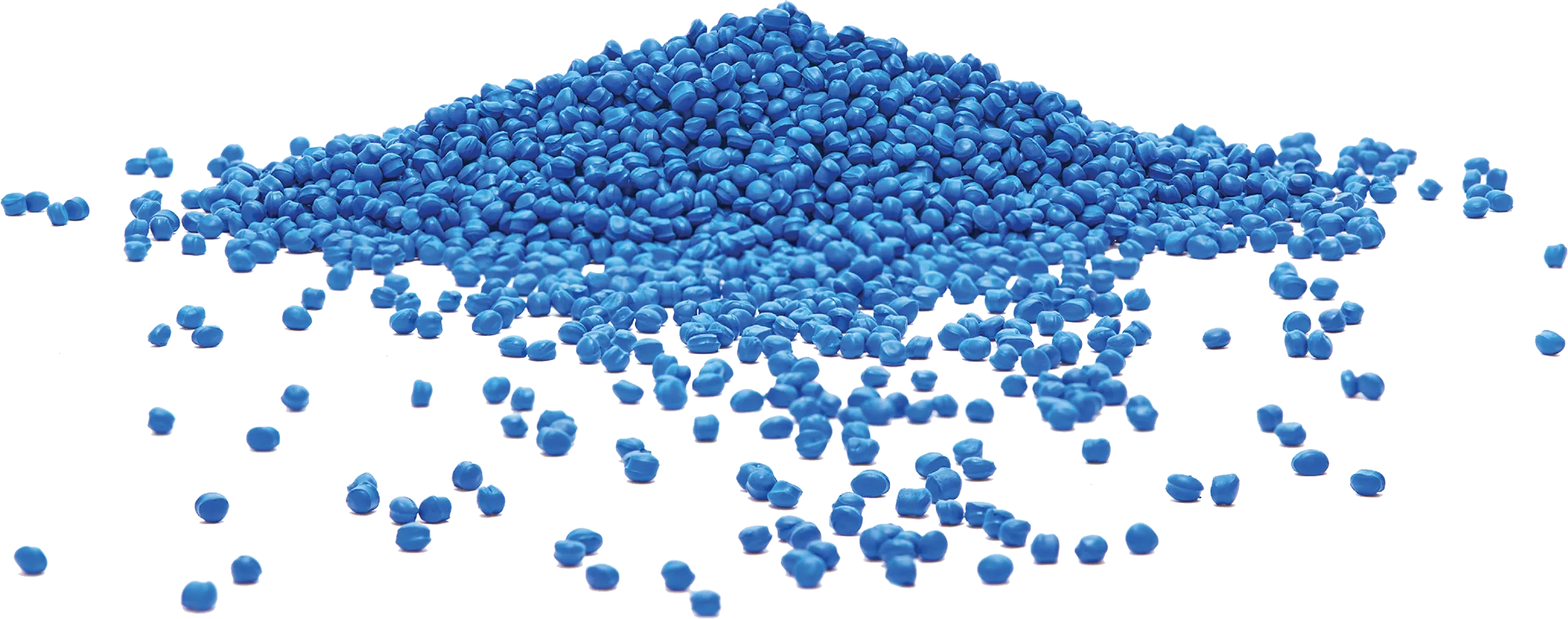
A Plastics Lexicon
chemical recycling: an advanced form of recycling that seeks to convert plastic waste back into raw materials for the manufacture of new plastics
mechanical recycling: the processing of plastic waste without altering the chemical structure of the waste; includes the collection, sorting, washing, drying and shredding of waste materials
microplastics: plastic particles less than 5 millimeters in size, the majority of which are produced by synthetic textiles, car tires and city dust
nurdles: very small beads or pellets of plastic that serve as raw material in the manufacture of plastic products (pictured above)
Plasticene: a proposed new age in Earth’s history, contained within the Anthropocene epoch, which begins with the proliferation of plastics in the 1950s and the incorporation of plastics into the geologic record
single-use plastics: goods made from fossil fuel-based chemicals that are meant to be disposed of after use:
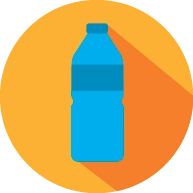
bottles, cutlery, cups

shampoo bottles, milk bottles

bags, food packaging, freezer bags

drinking straws, microwave dishes, bottle caps, wet wipes

cutlery, plates, cups

protective packaging, hot drink cups
The Afterlife of Plastics
“They did something really clever to save face and keep the heat off their industry, which was to create the recycling code numbers with the three arrows that you find on plastic products,” says Thomas Kinnaman, Bucknell’s Charles P. Vaughan Chair in Economics, who researches global trends in recycling. “They were worried that plastic would be banned, so rather than change their product, they shifted to telling the public that everything was recyclable.”
Post-consumer plastics are typically labeled with numbers, starting with one designating PET, the most commonly recycled plastic, all the way up to number seven, a catchall that includes everything from nylon to polycarbonate.
While PET and high-density polypropylene are more easily and therefore more commonly recycled, certain specialized plastics, such as those coded seven, can contain mixed materials or toxic substances that are difficult to process. However, challenges aren’t purely technical, as recycling infrastructure — or the lack thereof — significantly affects recyclability.
“It doesn’t matter if you create a magic material if you can’t scale it,” says Bradford. “The whole idea of recycling is dependent on a lot of different parts of the value chain working together. Not only does the material have to be recyclable, but somebody has to collect it. Somebody has to sort it. Somebody has to clean it. Somebody has to break it down to its original polymers and put it back together. And there has to be a market for it.”
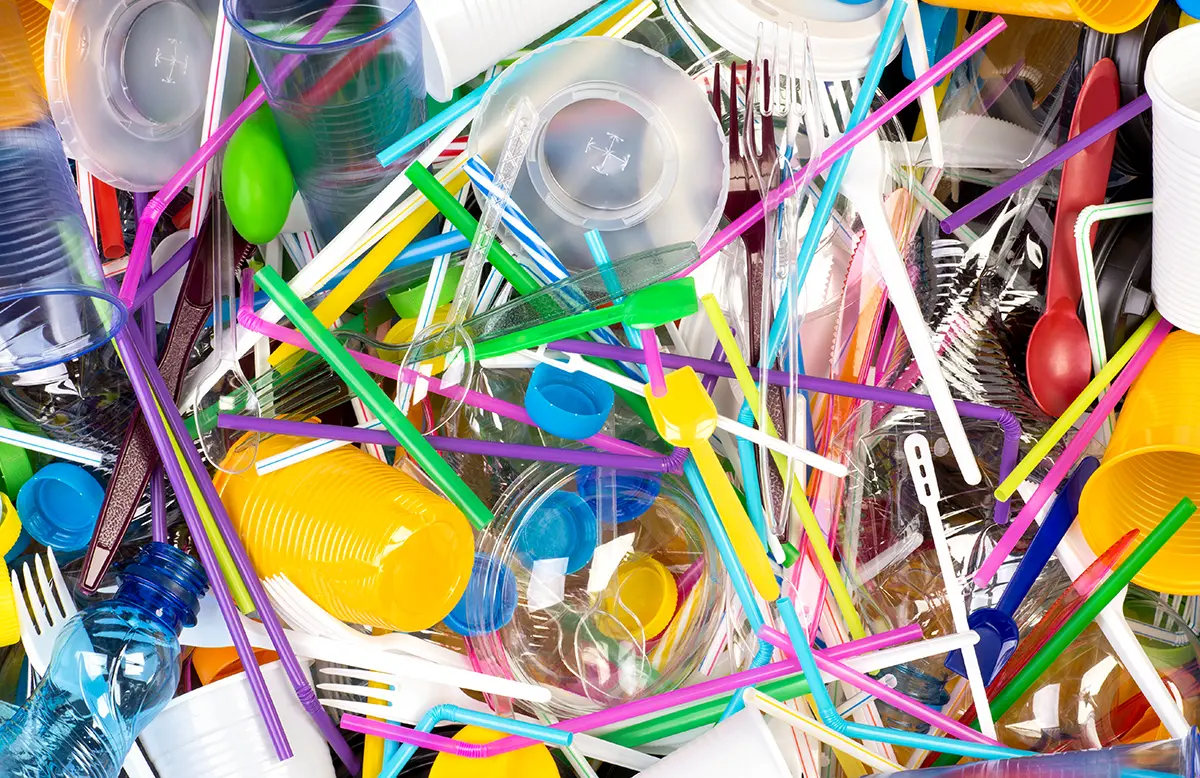
Microplastics, classified as particles less than 5 millimeters in size, are transported not only through water, but air, dust, rain and snow, by which they’re deposited in remote locations all across the world, from Antarctic sea ice to deep ocean trenches.
The ubiquity of microplastics raises serious questions about pollution mitigation efforts that focus on the end of the plastic life cycle, if only for the simple fact that the life of plastic doesn’t really have an end. So a cradle-to-grave analysis is somewhat of a misnomer, as plastic neither dies nor rests; it just breaks down into infinitely smaller and smaller particles, eventually achieving a kind of omnipresence. The paradoxical truth about plastics is that it is impossible to imagine a world without them — for better and for worse.
Perhaps the answer lies in reimagining what plastics are altogether — from the first stage to the last.
a lesson from ‘the Graduate’

The dark actualities beneath the sparkling appearances of plastics were clear to Braddock, figuratively in the duplicitous characters around him and literally in the duplicitous career before him. The actualities were also clear to us, or plastics as a metaphor for the characters would have failed in the film. But it worked because it expressed the essence of plastics in America: like the characters, glitzy at first glance but destructive at heart.
Plastics were patriotic when they entered American life after World War II, having provided parts for airplanes, weapons and other military needs. They enabled a consumer culture previously unknown to us, fueling our American idolatry of efficiency, affordability, effectiveness and ease. “Plastics: A Way to a Better More Carefree Life,” declared House Beautiful magazine in 1947.
All that glitters is not gold. By the first Earth Day in 1970, the same year President Richard Nixon created the EPA, the ecological costs of plastics were stark. Smog from factories making everything from Frisbees to Barbies smeared the sky, trash incinerators burning plastics further toxified the air and mountains of plastics rose in landfills, recycling and regulation nascent. Ever since, as plastics have become more prevalent and harmful — last April, the same EPA called plastics pollution “ubiquitous”— we’ve discovered plastics everywhere in our world and in ourselves, exacerbating societal ills from cancer to climate change.
“Yes, I will,” Braddock responds.
“Ssh, enough said,” McGuire whispers. “That’s a deal.”
Sustainable Solutions
Before plastic is recycled or deposited in a landfill, before it is used or consumed, before it is transported to store shelves or processed and manufactured, it is extracted from the earth in the form of oil, gas or coal.
Or at least, this is true of 99% of plastics. Contained within the other 1% is a range of novel technologies and materials that reconceptualize the entire life cycle of plastic.
“People tend to use the terms ‘bio-based plastics’ and ‘biodegradable plastics’ interchangeably, but they’re actually different,” says Professor Kat Wakabayashi, chemical engineering, who for the last 15 years has been working with polylactic acid (PLA), a bio-based and biodegradable plastic material derived from fermented plant starches. “Our lab works on modifying these bioplastics so that we end up with a more consistent, more well-behaved product.”
To do that, he and his students purchase commercial PLA pellets, roughly the size and shape of Nerds candy, and reinforce them with bio-based cellulose fibers derived from wood pulp from a sustainably managed forest in Maine. Using his lab’s solid-state shear pulverization extruder, he compounds small pieces of these cellulose fibers with PLA to create a stronger, more reliable material that resists softening at low temperatures.
Wakabayashi’s research is also concerned with the end-of-life scenario for PLA. Its low heat stability can make it challenging to mechanically recycle, but it can biodegrade within months under the right industrial composting conditions. In collaboration with the Bucknell Farm, Wakabayashi and his students developed a custom soil degradation apparatus to evaluate the biodegradability of their PLA samples. “We have actually seen signs and measurements of polylactic acid degrading in our controlled environment in the lab, so that’s a good sign,” he says.
While PLA is one of the most prevalent commercial bioplastics worldwide, among the most promising polymers of the future is polyhydroxybutyrate (PHB) — a bio-derived and biodegradable plastic.
“PHB is made as an emergency food source in bacteria,” says Professor Hannah Yocum M’16, chemical engineering. Yocum’s research in metabolic engineering started with making precursors to antibiotics, though she eventually discovered that the application of different enzymes to those precursors could be used to produce bioplastics like PHB. “We found you can take the genes that code for the enzymes that make the bioplastic and put them into another microbe and make more bioplastic,” she says.
PHB is easily and quickly biodegradable and biocompatible, meaning that it is well suited for biomedical applications, such as medical implants and sutures.
The end-of-life scenario of even bioplastics poses familiar challenges. One solution for reducing waste could lie in reengineering traditional plastics to better close the life-cycle loop.
Students working to reduce
society’s carbon footprint

Mikey Brandt ’26, markets, innovation & design
EcoMark: a biodegradable marker
Morgan Powell ’26, civil engineering
Trapped Grass: Replacing unused grass with native plants
Forevergreen: Tracking and offsetting carbon footprints
A Catalyst for Change
Though not all methods of recycling are created equally.
Mechanical recycling involves the melting and shredding of material without altering the chemical composition. “You can melt polyethylene down and reprocess it, but there’s a finite number of times you can do that,” says Mara Kuenen ’18, who majored in chemical engineering and is now a postdoctoral researcher in chemistry at the University of Minnesota. “With chemical recycling, you actually break down waste at a molecular level to return it to those original monomers.”
Kuenen’s research with polyethylene involves devising strategies to make traditional plastics more recyclable. “We’re trying to design materials from the bottom up so their recyclability is inherent in them from the beginning,” she says. “We want to make those strong chemical bonds breakable under specific circumstances, so something like your water bottle doesn’t degrade in your hand while you’re drinking from it, but it does easily degrade with the right trigger.”
In Kuenen’s research, that trigger involves using small alcohol molecules to break down her polyethylene-like polymers into individual molecules that can be repolymerized into new, high-quality plastics. The same premise informs the work of Philip Onffroy ’22, who studied chemical engineering at Bucknell and is now a doctoral candidate at Stanford University.
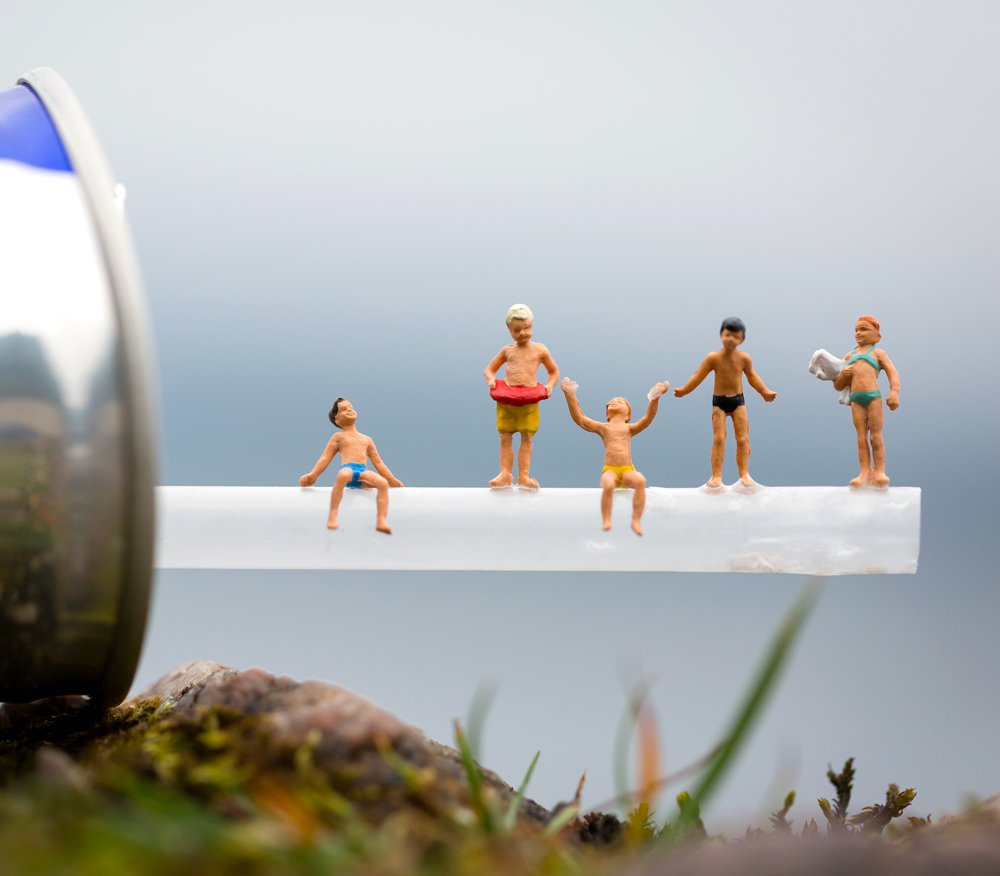
Plastics recycling that relies on specific biological catalysts is still in the early stages of research, but the technology could help build a circular economy and reduce plastic waste.
Even so, the existence of the proverbial “magical material” is still constrained by problems of scale and economic viability. “I can do things at my lab bench to make something that is recyclable, but if there’s not an economic incentive for it or a policy to support it, then it’s not going anywhere,” says Kuenen. “My polyethylene materials aren’t going to solve the plastic waste crisis. Sure, they may be a part of a solution, but for these global changes to happen, we really need policy changes.”
In the spirit of circularity, it all comes back to Busan and the need for a global treaty.
“While they didn’t finish the negotiations, they did make a ton of progress on some key areas,” says Harris. “Things like extended producer responsibility are in there. Things like calling on governments to establish targets for recycling rates and for access to recycling are in there.”
As someone who has witnessed the negotiation process from its inception, Harris foresees an eventual treaty as a necessary catalyst to inspire a broad array of solutions, from improved and expanded recycling infrastructure to greater investment in bio-based and biodegradable plastics. “It’s not going to be a one-size-fits-all, universal solution,” he says. “Once governments complete negotiations and they move to implementation, the private sector in general is going to have a huge role to play in implementing the solutions. The treaty sends a signal to the private sector to accelerate investments and innovation.”